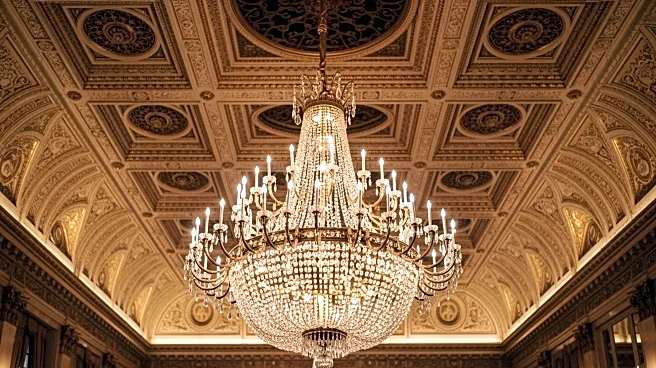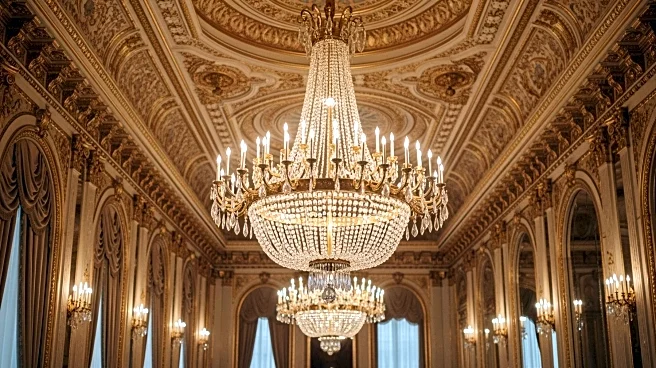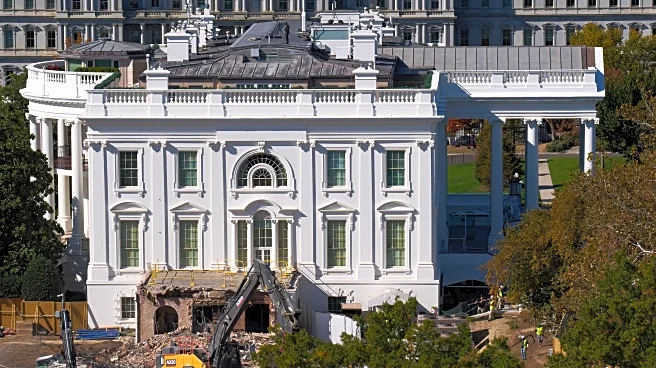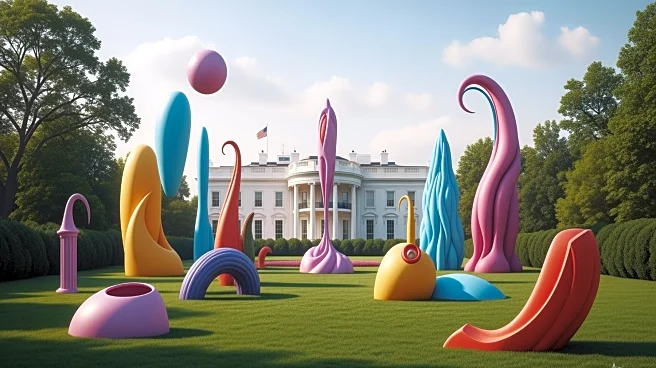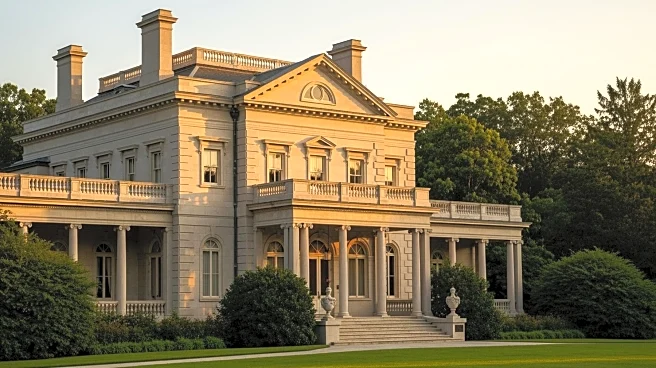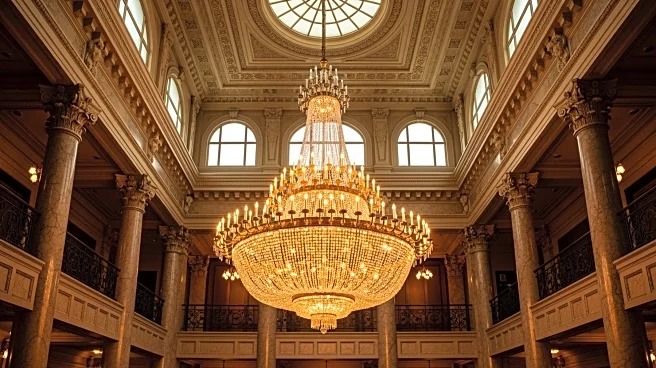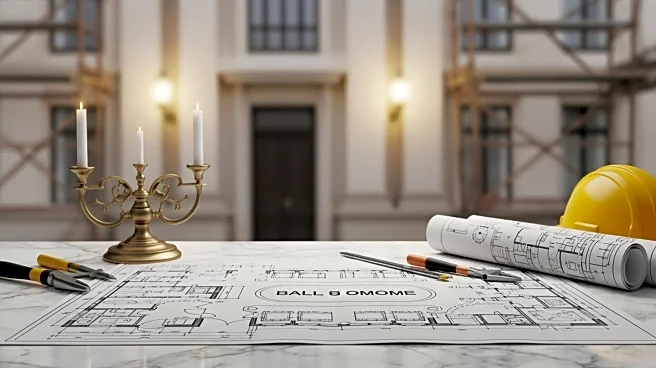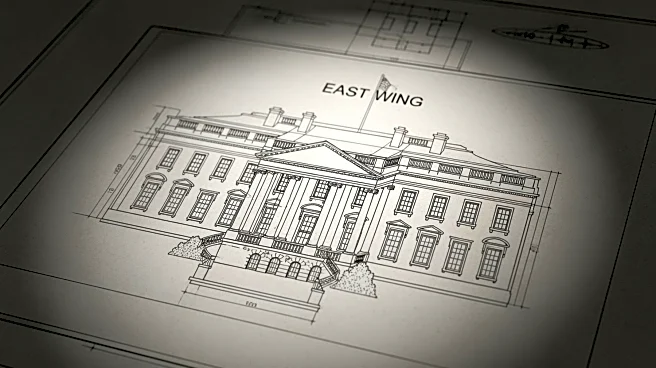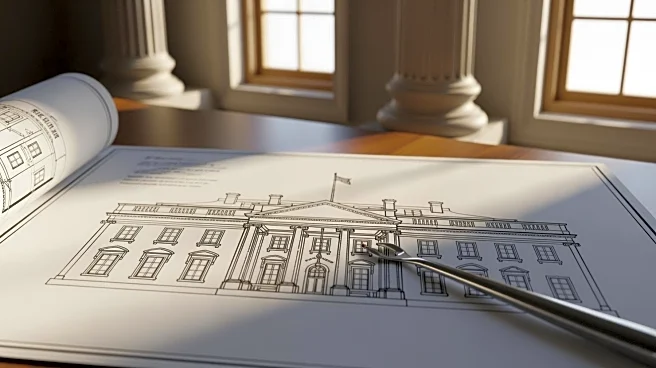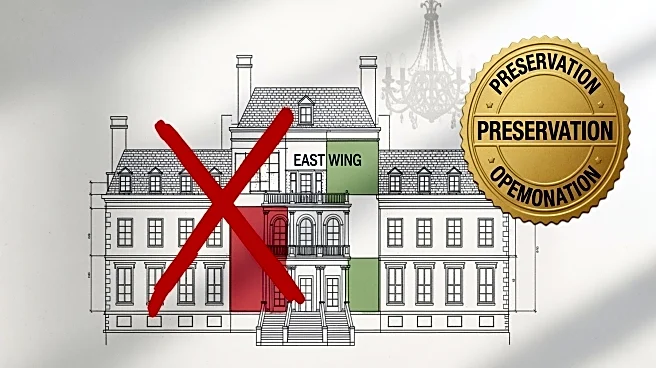What's Happening?
President Trump has denied reports that he plans to name the new White House ballroom after himself, labeling such claims as 'fake news.' The ballroom, part of a controversial renovation project involving
the demolition of the East Wing, is intended to host up to 650 seated guests. The project has faced criticism from lawmakers, including Senate Minority Leader Chuck Schumer, who accused Trump of pursuing a 'vanity project.' Trump defended the renovation, stating the East Wing was 'ready to be replaced' and emphasizing that the ballroom is privately funded. The National Trust for Historic Preservation has expressed concerns about the project's impact on the White House's historical integrity.
Why It's Important?
The renovation project and the controversy surrounding the naming of the ballroom reflect broader debates about presidential legacy and the use of public spaces for personal branding. The project, funded by private donors, raises questions about the influence of private interests in public infrastructure. The demolition of the East Wing, a historically significant part of the White House, has sparked concerns among preservationists and historians, highlighting tensions between modernization and historical preservation. The situation underscores the complexities of managing national heritage sites and the potential implications for public perception of presidential actions.
What's Next?
The completion of the ballroom project may lead to further scrutiny from historians, preservationists, and political figures regarding its impact on the White House's historical integrity. Public and political reactions to the new ballroom's design and naming will likely continue, influencing discussions on presidential legacy and the role of private funding in public projects. The National Trust for Historic Preservation may push for additional reviews and consultations to ensure the project's compliance with preservation standards.
Beyond the Headlines
The controversy highlights the ethical considerations of using public spaces for personal branding and the potential influence of private funding on public projects. It raises questions about the balance between modernization and preservation in managing national heritage sites. The situation may prompt broader discussions on the role of private interests in shaping public infrastructure and the implications for democratic accountability.
